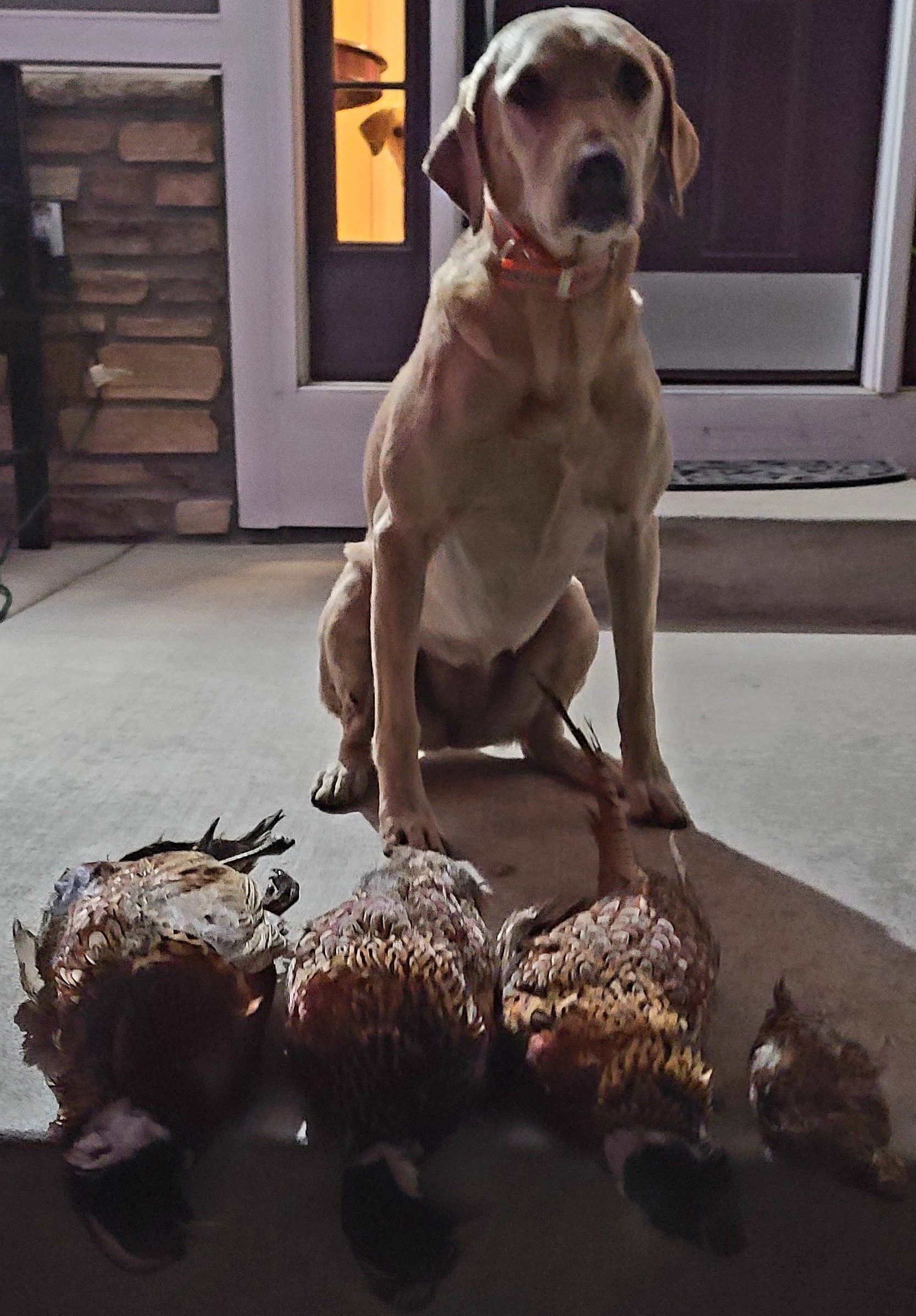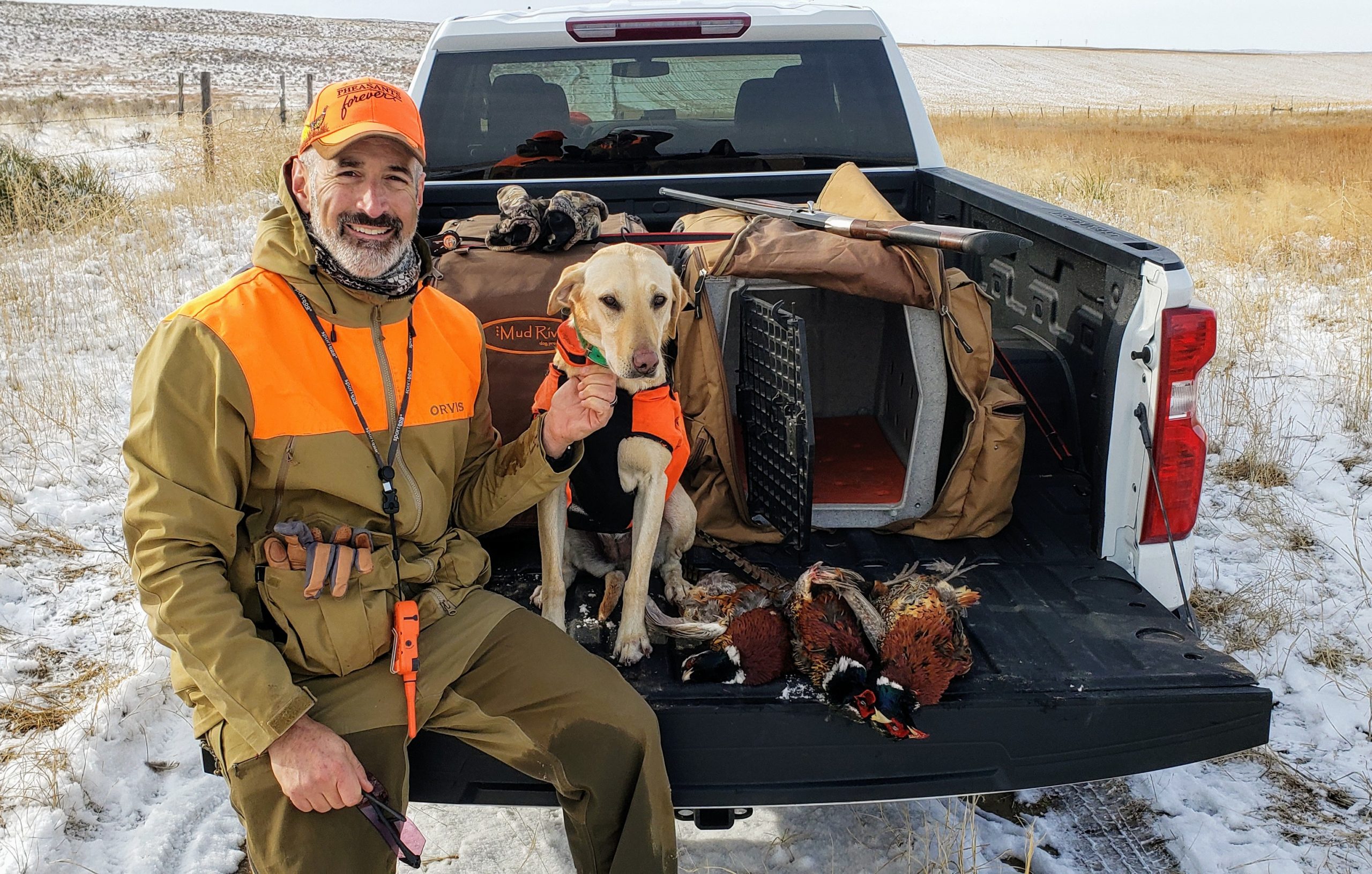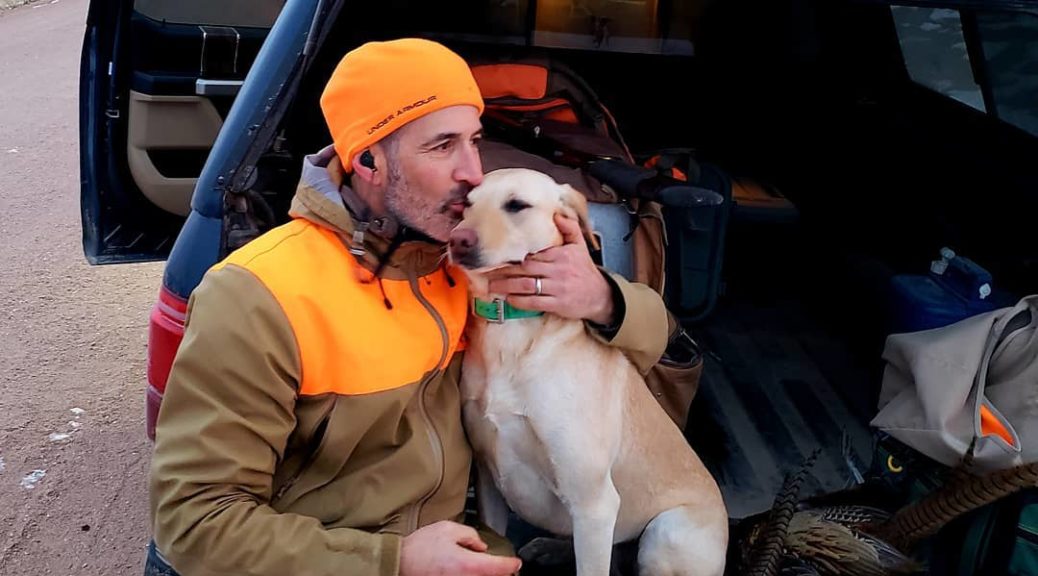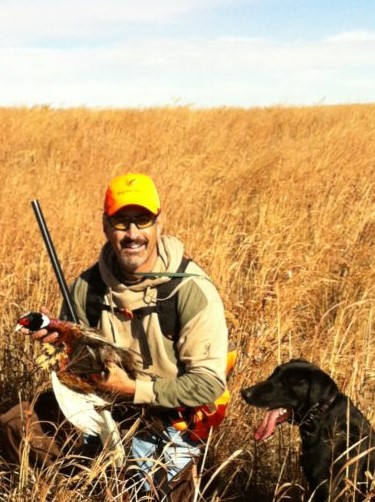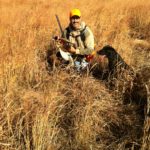I can recall almost every hunt that Echo and I have experienced over the last 5 years. There are some hunts however that stand out because something remarkable occurs. Most often it is Echo doing something so tremendous that the moment is emblazoned in my mind forever.
On this cold December day, Echo and I took the long drive to our favorite farm in Wray, Colorado. The plan was to meet up with a good friend and his dog by mid-morning. I know the area well, and I wanted to hunt a piece of land that we had not hit too many times over the last few years. The cows had not been let into both the north and southwest corners, so the cover circling the corn field was dense enough to hold birds. The wind was blowing over 10 mph from the northeast, so we started our walk from the opposite corner. Echo and I took a circuitous route to the end of the southwest corner so we hopefully would catch a pheasant napping. Once we got 20 yards out from the combination of grass and tumbleweeds, Echo started to get birdy. While I knew that we were in business, I was feeling a bit groggy from the long drive. When the rooster busted 15 yards to my right, I struggled to square up to the speedy bird. Two shots later, Echo paused her run as she realized that I had missed. My apology was heard, and we continued our work along the edge of the corn field. Echo will point when a bird freezes, and just moments after my failure, she stopped in her tracks. When she suddenly popped up, it caused the rooster to take flight. One shot of HEVI-METAL #4 knocked the bird out of the air.
With a bird in the vest, we continued our walk north into the next corner. There is tumbleweed filled ditches that surround this part of the field. Many times, the birds will evade our pursuit by carefully navigating these channels. About halfway through the middle of the northwest corner, Echo started to move with a purpose. While no birds took flight, I believed that she was pursuing more than one of the targeted species. As we approached the four rung barbed wire fence that abutted a ditch, Echo elevated into beast mode. Fueled by the scent of our quarry, my dog exploded through the bottom rung, but she caught a buckle of her chest protector on a single barb. That contact caused the entire vest to tear off her body. Once I put the fragments of the material in my pack, we started to work both sides of the ditch heading east. Echo remained hot but were not able to get the runners to fly.
My friend Oneal finally arrived, and he and Marley took the north side of the tree line that paralleled the two ditches we had just been hunting. As we walked west, Echo became excited as the northeast wind told her that birds were still present. Once Echo stopped and turned to our right, a rooster got up from the ditch and flew across the road. My first shot was behind the bird, but my next round knocked the bird to the ground. Unfortunately, the long shot was not lethal, and the speedy cock ran through the ditch and under the first fence. Echo was in full stride as she circumvented the lowest wire. She tore across the northwest corner just a few yards behind the bird. As the pheasant cut left it went under a second and then a third barbed wire fence. Echo tackled the bird, and headed back to me with the rooster in her mouth. After grabbing the bird, I noticed that my hand was covered in blood. It only took a few seconds to realize that Echo’s ear was split in half, and blood was gushing everywhere. It took me 30 minutes to slow the bleeding, and make the decision to head home. Almost 4 hours later, we arrived at the veterinarian, and Echo was stitched up.
This was the first major injury Echo suffered in all of our days spent in the field. Unfortunately, it would not be the last. On our first hunting trip after her ear had healed, Echo tore her knee open at some point during the day. The wounds Echo suffered shook me up. I thought I was prepared for handling my dog’s in-field ordeals. I wasn’t, and I am not sure how I am going improve my veterinarian skills.
